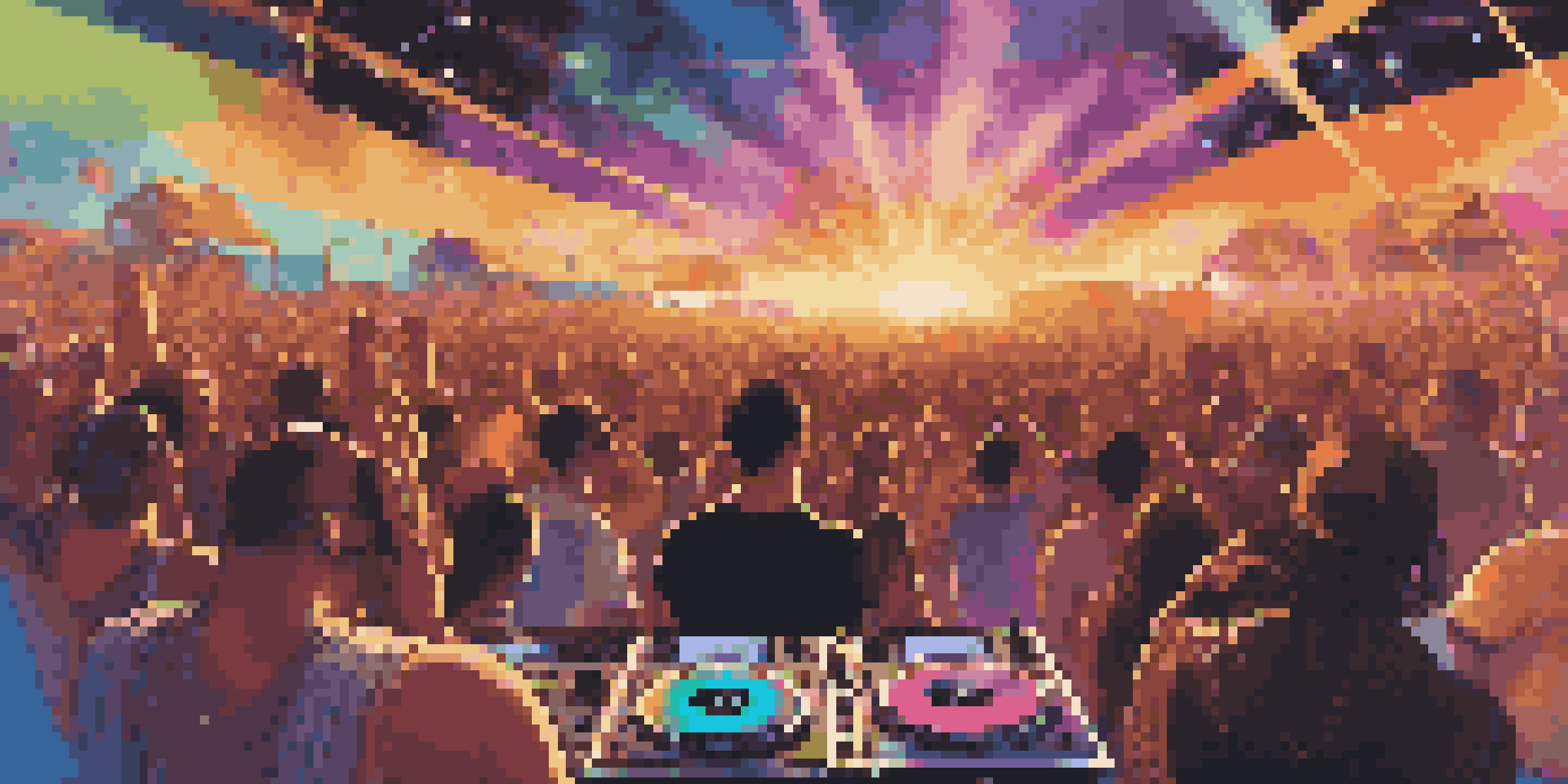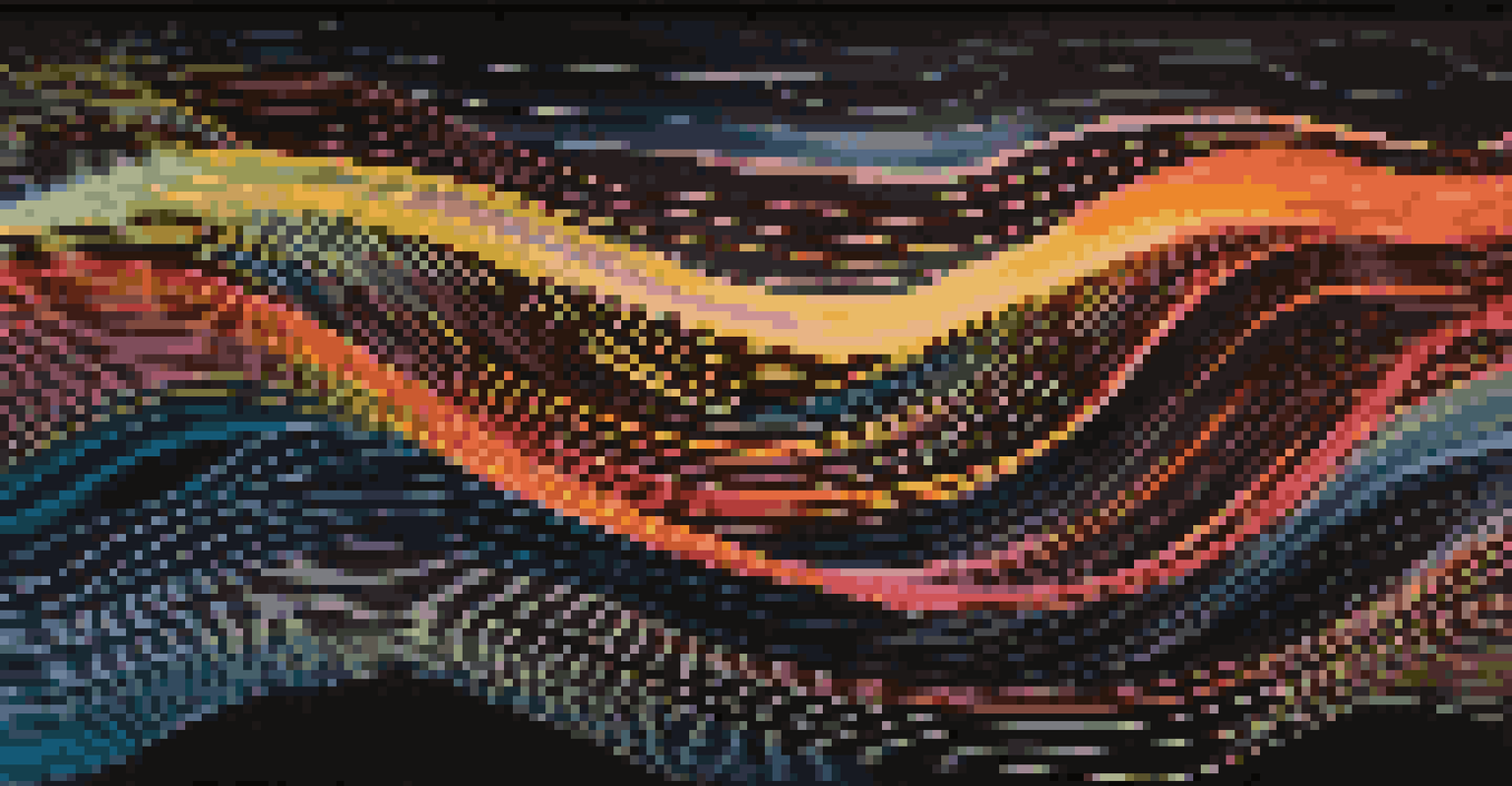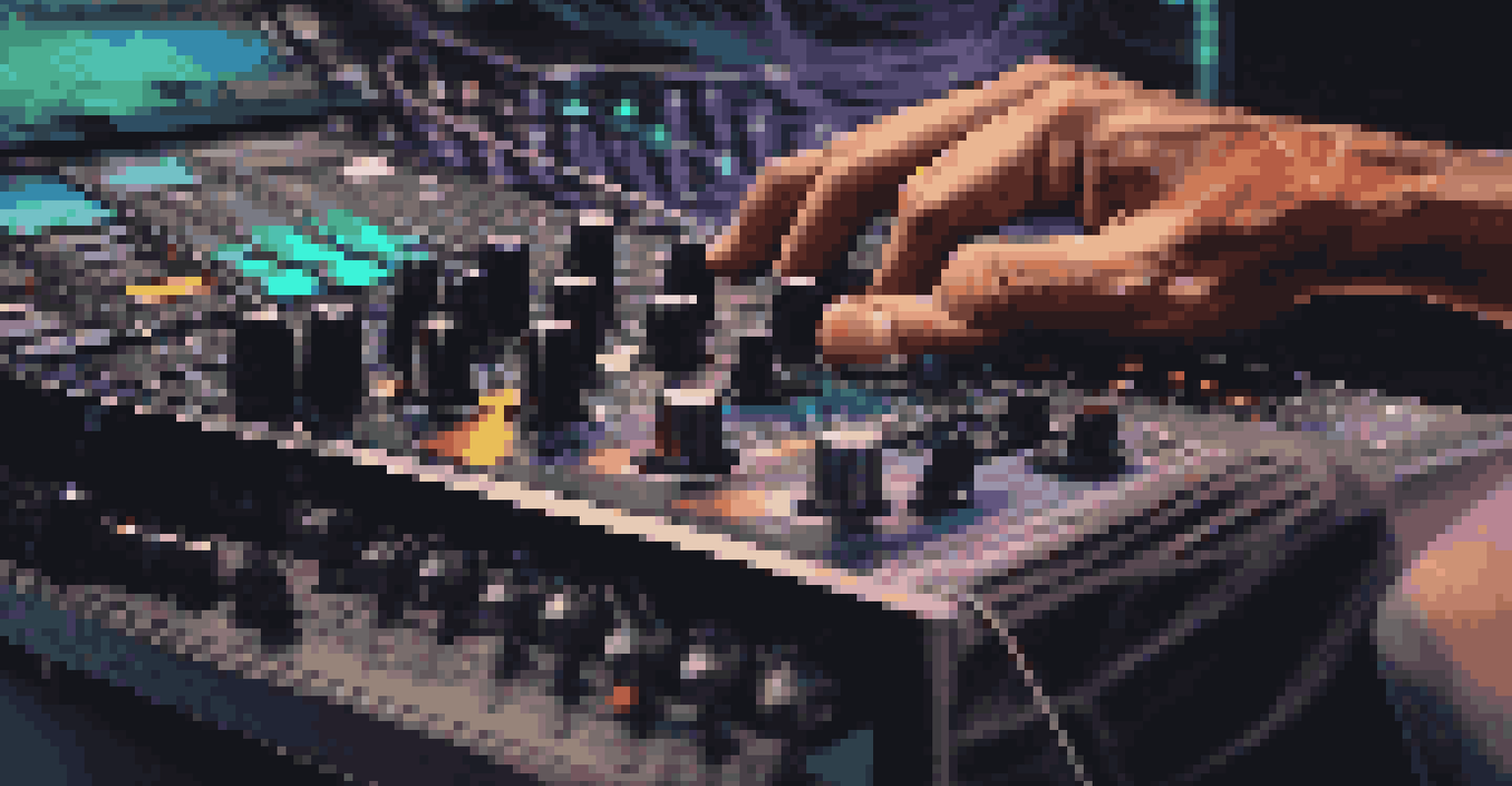Sound Design for DJs: Crafting Unique Sonic Landscapes

Understanding the Basics of Sound Design for DJs
At its core, sound design is the art of creating and manipulating audio to evoke emotions and enhance experiences. For DJs, this means crafting unique soundscapes that can captivate the audience and elevate their sets. Whether it's through synthesizers, samples, or effects, understanding the fundamentals of sound design is crucial for any DJ looking to stand out.
Sound design is the art of creating and manipulating audio to evoke emotions and enhance experiences.
One key concept to grasp is the difference between sound and music. While music typically follows a structured arrangement, sound design allows for more freeform experimentation. For instance, layering various sounds together can create a rich atmosphere that transports listeners to a different world, making the DJ set memorable.
Moreover, being familiar with tools like DAWs (Digital Audio Workstations) and audio effects can significantly enhance a DJ's sound design skills. These tools help in shaping sounds, adding depth, and ensuring that every element of the mix contributes to the overall experience.
The Role of Rhythm and Melody in Sonic Landscapes
Rhythm and melody are the backbone of any great track, and in sound design for DJs, they play a pivotal role in engaging the audience. A well-crafted rhythm can get people moving, while a captivating melody can linger in their minds long after the music stops. Understanding how to weave these elements together can transform a simple beat into an unforgettable experience.

For example, consider the pulsating beats in electronic dance music (EDM). DJs often manipulate tempo and rhythm to create a dynamic flow that keeps the crowd energized. Incorporating variations in rhythm throughout a set can also build anticipation, leading to those euphoric moments where everyone is completely in sync.
Sound Design Enhances DJ Sets
Sound design is crucial for DJs to create unique soundscapes that captivate and engage their audience.
Melody, on the other hand, can add emotional depth to a performance. A haunting synth line or a catchy hook can evoke feelings of nostalgia or joy, enhancing the overall vibe. Balancing these two elements is essential for DJs aiming to create a cohesive sound that resonates with their audience.
Exploring Sound Textures and Layers
Sound textures add richness to a DJ's mix, transforming it from a basic compilation of tracks into a captivating sonic experience. By layering different sounds—like pads, beats, and samples—DJs can create a more immersive environment. Imagine walking through a forest and hearing the rustle of leaves, birds chirping, and a distant waterfall; that's the magic of layered sound design.
Sampling is a cornerstone of modern music production, and for DJs, it opens a world of creative possibilities.
To achieve this, DJs can experiment with various sound sources, from field recordings to synthesized sounds. For instance, incorporating ambient sounds can provide a grounding element that enhances the electronic beats. This technique not only enriches the auditory experience but also invites listeners to engage with the music on a deeper level.
Moreover, attention to detail in layering can lead to unique sonic signatures for a DJ. Just as a painter uses different brush strokes to create depth in a painting, DJs can use textures to build a soundscape that feels both cohesive and distinct. This personal touch can help establish an artist's identity in a crowded music scene.
Utilizing Effects to Enhance Sound Design
Effects are powerful tools in sound design that can transform ordinary sounds into extraordinary experiences. From reverb to delay, these effects can add depth, space, and movement to a DJ's set. For example, reverb can make a sound feel larger than life, reminiscent of echoing in a vast hall, while delay can create rhythmic patterns that keep the dance floor engaged.
DJs can also use effects to create transitions between tracks, smoothing out or intensifying changes to maintain flow. A well-timed filter sweep can build anticipation during a drop, making the moment even more impactful. Understanding how and when to apply these effects is essential for mastering sound design.
The Power of Rhythm and Melody
Rhythm and melody are essential elements that can transform a simple beat into an unforgettable experience for listeners.
Incorporating unique effects can also set a DJ apart from others. Experimenting with less common effects, like granular synthesis or modulation, can lead to fresh sounds that surprise and delight the audience. It’s all about pushing boundaries and exploring new territories in sound design.
The Importance of Sampling in DJ Sound Design
Sampling is a cornerstone of modern music production, and for DJs, it opens a world of creative possibilities. By taking snippets of existing tracks, speeches, or sound bites, DJs can create entirely new compositions that resonate with their audience. This technique not only adds variety but also connects the new with the familiar, inviting listeners on a nostalgic journey.
For instance, a DJ might sample a classic vocal line from a well-loved song and incorporate it into their mix, bridging generations of music lovers. This not only creates a sense of familiarity but can also breathe new life into an old tune. Sampling can be a fun way to showcase influences and pay homage to the artists that came before.
However, it’s important to navigate the legalities of sampling carefully. Ensuring proper clearance for samples can prevent potential copyright issues and protect a DJ's artistic integrity. Embracing sampling responsibly allows DJs to enhance their sound design while respecting the original creators.
Creating Atmospheres with Sound Design
Atmosphere is key to immersing an audience in a DJ set, and sound design plays a vital role in crafting these experiences. By using ambient sounds, effects, and textures, DJs can create a sonic environment that transports listeners to another realm. Think of it as setting the scene for a movie; the right sounds can evoke emotions and transport people to different places without them even realizing it.
For example, incorporating nature sounds or urban elements can create a sense of space that envelops the audience. A DJ might use the sound of waves crashing or city traffic to set a backdrop for their performance, enhancing the overall vibe. This technique not only captivates the audience but encourages them to let go and lose themselves in the music.
Sampling Adds Creative Depth
Sampling allows DJs to infuse their mixes with familiar sounds, creating nostalgia while also connecting with new audiences.
Moreover, building atmosphere can also involve pacing and dynamics. A slow, ambient introduction can draw listeners in, while a sudden build-up can energize the crowd. Mastering these elements allows DJs to guide the emotional journey of their audience, ensuring a memorable experience from start to finish.
The Future of Sound Design for DJs
The landscape of sound design for DJs is continually evolving, influenced by technology and changing musical trends. With advancements in software and hardware, DJs have access to an ever-expanding array of tools to experiment with. Virtual reality (VR) and artificial intelligence (AI) are starting to play a role in sound design, offering new ways to create and experience music.
As we look ahead, it’s essential for DJs to stay adaptable and embrace innovation in their sound design processes. This might mean learning new software, experimenting with different genres, or even collaborating with artists from diverse backgrounds. The future is all about blending influences and pushing creative boundaries.

Ultimately, sound design will continue to be a vital aspect of a DJ's craft, shaping how music is created and experienced. By staying curious and open-minded, DJs can craft unique sonic landscapes that resonate with audiences and keep them coming back for more.